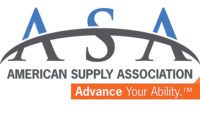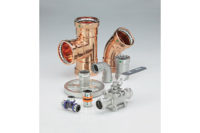EPA proposes revisions to
Reduction of Lead in Drinking Water Act
The Environmental Protection Agency is proposing to make conforming changes to the existing drinking water regulations based on the Reduction of Lead in Drinking Water Act of 2011 and the Community Fire Safety Act of 2013.
Section 1417 of the Safe Drinking Water Act prohibits the use and introduction into commerce of certain plumbing products that are not lead-free. The RLDWA revised the definition of lead-free to lower the allowable maximum lead content from 8% to a weighted average of 0.25% of the wetted surfaces of plumbing products and established a statutory method for calculating lead content.
In addition, the RLDWA created exemptions from the lead-free requirements for plumbing products used exclusively for nonpotable services as well as for other specified products. The CFSA further amended Section 1417 to exempt fire hydrants from these requirements.
EPA proposes to establish new requirements to assure individuals purchasing, installing or inspecting potable water systems can identify lead-free plumbing materials. Specifically, EPA proposes to establish labeling requirements to differentiate plumbing products that meet the lead-free requirements from those that are exempt from the lead-free requirements and to require manufacturers to certify compliance with the lead-free requirements.
These proposed requirements would reduce inadvertent use of non-lead-free plumbing products in potable use applications and, consequently, reduce exposure to lead in drinking water and associated adverse health effects.
Comments to EPA on these revisions must be received on or before April 17, 2017. Submit comments, identified by Docket ID No. EPA-HQ-OW-2015-0680, to the Federal eRulemaking Portal at www.regulations.gov. Follow the online instructions for submitting comments.
EPA proposes revisions to Reduction of Lead in Drinking Water Act

Source: Federal Register



